Craft supplies are becoming the unexpected new trend, flying off the shelves faster than ever before. What’s driving this sudden surge in demand is a mix of creativity, innovation, and surprising new markets.
The rise in DIY projects and personalized creations has made craft supplies a hot commodity. In a time where individuality is prized, the ability to craft something unique is more important than ever.
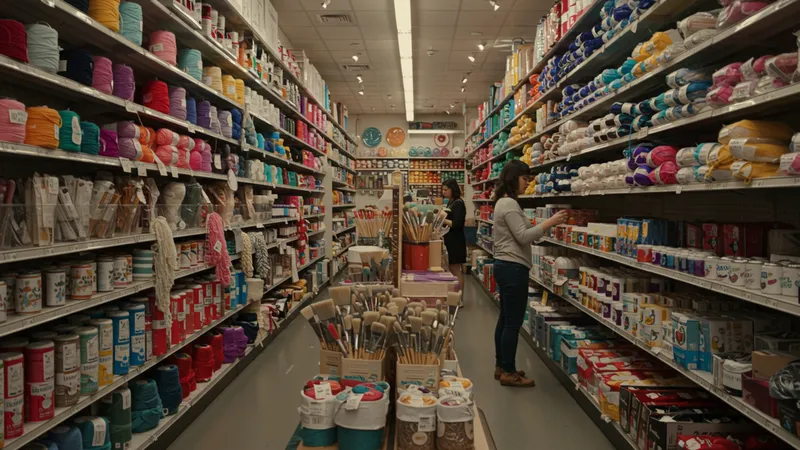
One surprising revelation is that craft supplies are now seeing a resurgence not just among hobbyists, but also in educational settings where they are used to enhance learning and development. Schools are integrating crafts into their curriculums, believing hands-on activities boost cognitive skills. But that’s not even the wildest part…
Even tech companies are getting in on the action, integrating crafting elements into their productivity apps. This blurring of lines between craft and tech points to a future where creative expression dovetails with digital innovation. But the full extent of these developments goes deeper than you might think…
What happens next shocked even the experts: the traditional crafting industry is being reshaped by startling new trends and technologies. Prepare to be amazed as we delve into the untold stories and fascinating shifts within this booming market…
Millennials, often caricatured as the tech-savvy generation, have become unlikely ambassadors of craft culture. Despite their reputation for living life through screens, an increasing number are turning to crafts as a way to disconnect and create something tangible. The hands-on experience provides a gratifying contrast to their digital lives. This demographic shift is significant, as millennials often set consumer trends that reverberate across generations. Craft supply retailers are taking advantage of this trend by tailoring their products and marketing strategies specifically for this audience. But there’s one more twist…
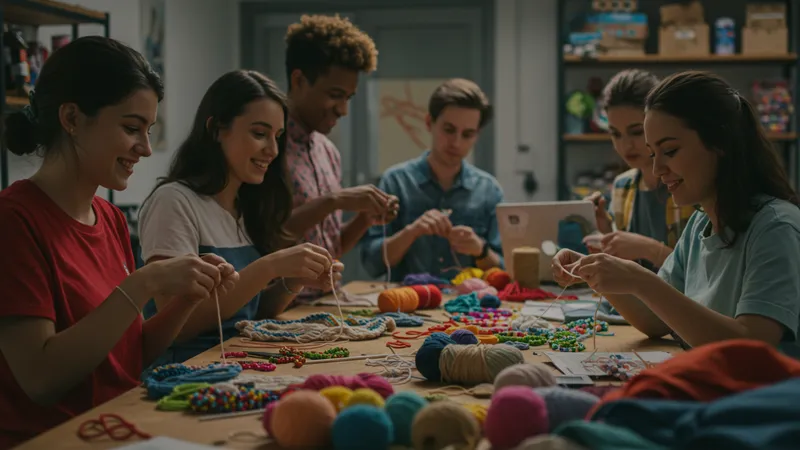
Beyond personal enjoyment, millennials have discovered a lucrative side to crafting, using platforms like Etsy to sell their handmade creations. What was once thought of as a mere hobby has become a viable income stream, transforming casual craft enthusiasts into entrepreneurial artisans. This entrepreneurial surge is redefining the marketplace and challenging traditional ideas of creative careers. What you read next might change how you see this forever.
Social media has amplified this movement, serving as both a showcase and sales platform. Instagram and Pinterest flood feeds with colorful ideas, sparking inspiration and, in turn, driving demand for unique tools and materials. This trend exemplifies how technology, which seemed poised to overshadow crafts, is paradoxically fueling their growth. But the implications stretch even further...
As millennials continue to push the envelope, they’re also demanding more sustainable and ethically produced materials. This demand is prompting a re-evaluation of supply chains and manufacturing practices. Industry leaders are now being challenged to rethink how and where products are sourced, which will likely shift the craft supply landscape in the coming years. But this is only the beginning…
Sustainability has emerged as a driving force in the world of craft supplies. In a market where materials traditionally depended on synthetic fibers and plastics, a growing awareness has spurred demand for greener alternatives. Consumers are increasingly choosing products that align with their values, pushing companies to innovate with eco-friendly materials and packaging. This shift is not only good for the planet but also satisfying a new generation of eco-conscious crafters. But there’s a deeper story here...

In response, many businesses are pivoting their strategies to highlight environmental stewardship. Some are launching lines of recycled or biodegradable craft materials, while others are investing in energy-efficient manufacturing processes. This pivot marks a significant evolution in the industry, signaling that sustainability is not just a trend but a fundamental change. But what will this mean for traditional crafting materials?
The move towards sustainability is also affecting pricing structures. Eco-friendly products often come at a premium, reflecting the higher cost of responsible production. Yet, consumers seem willing to pay more for materials they believe will minimize their environmental footprint. This willingness suggests a shift in purchasing priorities, which is reshaping market dynamics and encouraging more companies to jump on the sustainability bandwagon. But how far can this trend go?
While the adaptation of sustainable practices carries many benefits, it also presents challenges. Companies need to educate consumers about the importance and benefits of these changes. As the narrative around sustainable crafting evolves, it could radically redefine consumer expectations and drive further innovations in product offerings. Could this be the dawn of a new era for crafting?
The digitization of craft supplies is revolutionizing how and where people create. Online platforms now allow users to access a wide array of tools and materials at the click of a button, expanding creative possibilities beyond the constraints of physical stores. This digital transformation is making crafting more accessible than ever, breaking down barriers for budding creators worldwide. But there's more beneath the surface...
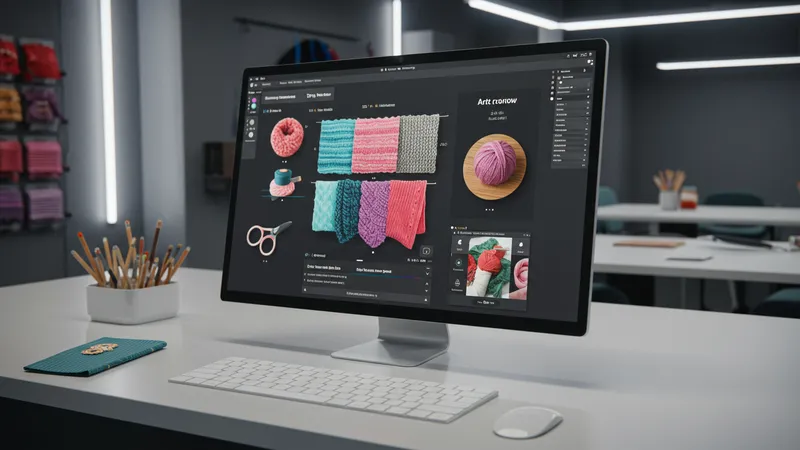
Craft supply companies are increasingly adopting e-commerce solutions to enhance customer interaction and streamline order processes. These digital advancements are fostering a more personalized shopping experience, enabling consumers to tailor their purchases to specific projects and preferences. Through high-tech interfaces, users can preview combinations of colors or textures before purchase, blending the tactile world of crafting with cutting-edge technology. How does this transformation influence traditional crafting skills?
Exclusively digital craft tools, like software for designing patterns or 3D printing, are gaining traction. These tools empower crafters to produce highly customized, intricate designs that were once unimaginable. The intersection of crafting with biorobotics and sophisticated software suggests a fusion of art and science, where imagination is the only limit. Yet challenges remain as the community grapples with authenticity and the balance between digital and handmade aesthetics. But there’s more to discover…
Educational platforms and online workshops are rising in tandem with digital tools, offering tutorials and classes to nurture skills from beginner to expert. This access to global expertise is transforming learning curves and skill levels, bridging geographic divides, and creating a more interconnected community of creators. The implications for the future of crafting are profound, possibly redefining global craft trends through shared knowledge and collaborative creativity. But the global landscape is transforming in unexpected ways…
In the midst of a digital revolution, there's a surprising revival of interest in artisanal crafts. Consumers are showing a renewed appreciation for the skills and stories behind handmade goods, fueling a desire for authenticity and craftsmanship. This resurgence is not just a fleeting nostalgia but a genuine shift in consumer preference, placing artisanal crafts back in the spotlight. But what’s driving this return to roots?

The revival is partly attributed to a growing counter-culture against mass production. In a world inundated with identical, machine-produced items, there's a strong yearning for uniqueness and human touch. Artisanal crafts meet this demand, offering products that have character, imperfections, and a narrative of creation. But there’s more to unravel in this trend...
Artisans are leveraging online platforms to tell their stories, reaching an audience eager to connect with the history and technique behind each creation. This narrative marketing not only engages consumers but also adds value to the items crafted, transforming them from simple goods to cherished possessions. The intersection of tradition with modern marketing presents an interesting dichotomy, merging timeless skills with contemporary strategies. Yet, this transformation unfolds further...
Government initiatives and cultural organizations are also playing a role in this resurgence by supporting traditional crafts through funding, fairs, and exhibitions. These efforts highlight the cultural importance of maintaining artisanal traditions and encourage the preservation of craft skills that might otherwise be lost. As such, the role of policy and support in boosting artisanal crafts cannot be ignored, offering new hope for traditional skills amidst a rapidly modernizing world. But what could this mean for the future?
Crafting trends are now breaking geographical boundaries, with unique global influences shaping new and intriguing styles. Cultures once disconnected are being reintroduced through a shared love of crafting, creating vibrant fusions of techniques and aesthetics. This cross-pollination is leading to unexpected innovations that are captivating worldwide audiences. But how have these international trends emerged?
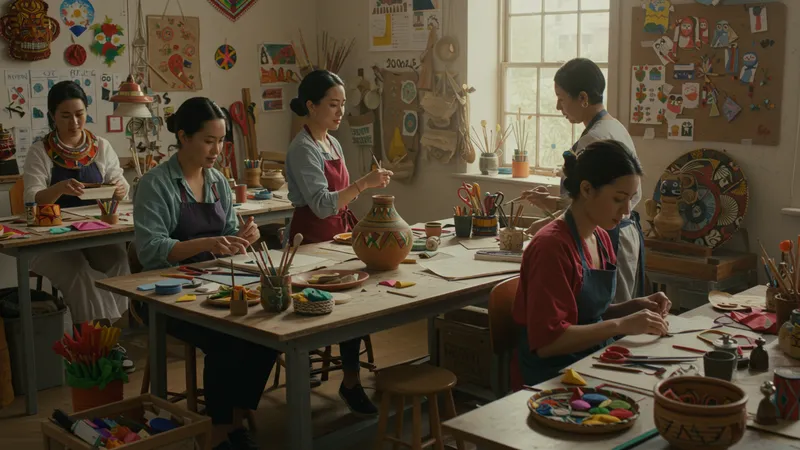
Travel and migration are significant contributors, bringing together diverse crafting traditions and techniques. As people carry their skills and stories across borders, new hybrid styles emerge, blending elements from various cultures into something entirely new. This cultural exchange is enriching the craft supply industry, offering materials and tools inspired by global artistry. There’s more beyond just the materials...
Technology plays a pivotal role in disseminating these trends. Online communities and social media enable effortless sharing of craft ideas across continents, fostering a virtual melting pot of creativity. This connectivity allows crafters to draw inspiration from a broader spectrum, leading to more dynamic and eclectic creations. But there's a twist to this digital-driven cultural sharing…
With globalization, the concept of authenticity is also evolving. As styles mix and cultural lines blur, the traditional definitions of authenticity are challenged, prompting a re-evaluation of what it truly means to craft authentically in today's interconnected world. This dynamic interaction between past and present, local and global, is crafting a new narrative for the industry. But there’s another layer to uncover...
The DIY ethic has surged, fueled by a desire for customized, authentic experiences and a rejection of homogenized consumer culture. As individuals embrace the power of making things themselves, the demand for diverse and quality craft supplies has skyrocketed. This cultural movement has taken root across demographics, redefining what it means to create. But what triggered this unprecedented rise?

Economic factors play a role, as DIY crafting offers a cost-effective alternative to purchasing finished products. In challenging economic climates, people turn towards DIY as a means to save money while personalizing their space and gifts. Additionally, the hands-on aspect of creating can provide therapeutic benefits, offering an escape from the stresses of daily life. Yet, there’s another underlying motivation driving this trend…
Media exposure has amplified DIY culture, with television shows, YouTube channels, and Pinterest boards overflowing with creative projects and inspiring tutorials. This visibility has demystified many crafting processes, making them more accessible to the average individual and spurring countless at-home projects. But there’s a revolutionary aspect transforming consumer behavior…
DIY has also given rise to micro-manufacturing, with individuals creating and selling their innovations online. This grassroots entrepreneurship fuels local economies and challenges the dominance of large corporations. The result is a democratized crafting industry where anyone can be a producer and contributor to the marketplace. But the implications for future innovation are even more profound...
Crafting has emerged as more than just a hobby; it’s now recognized as a potent tool for mental health support. Engaging in creative activities has been shown to reduce stress, anxiety, and depression by encouraging mindfulness and providing a productive outlet for emotions. This therapeutic aspect broadens the market, attracting a new demographics seeking holistic wellness solutions. But this is just scratching the surface...
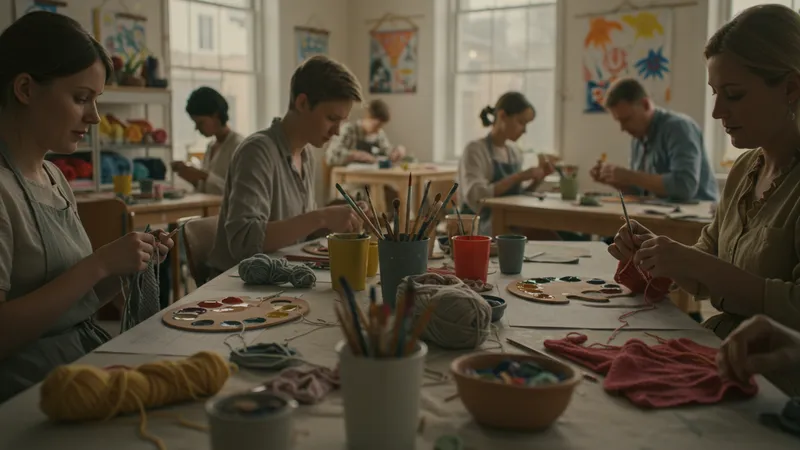
Craft therapy is being integrated into various health programs, with art therapists employing crafts to help patients express themselves and achieve mental clarity. Hospitals and clinics are using these techniques to aid recovery and improve patients’ overall well-being. The hands-on engagement offers a tangible focus that promotes calmness and satisfaction. But here’s where it gets even more intriguing…
Employers are also recognizing the benefits of crafting, incorporating these activities into workplace wellness programs. By offering crafting sessions, businesses aim to boost morale and foster team-building. The calming nature of crafting can help prevent burnout and enhance creativity, contributing to a more positive work environment. Yet, there’s another layer to explore…
The community aspect of crafting, especially in group settings or online forums, offers social connections that are crucial for mental health. Joining a crafting community provides a sense of belonging and shared purpose, countering feelings of isolation. As more people discover the mental health benefits of crafting, this aspect of the industry is poised for further growth and innovation, redefining therapeutic practices. What lays ahead could change crafting forever…
Innovation within the craft supply industry is accelerating, resulting in products that push the boundaries of creativity and practicality. From biodegradable glitter to heat-reactive paints, these innovative offerings captivate an audience eager for new tools to expand their creative horizons. The development of such unique products reflects the dynamic nature of the industry and its ability to adapt. But what’s propelling this wave of creativity?
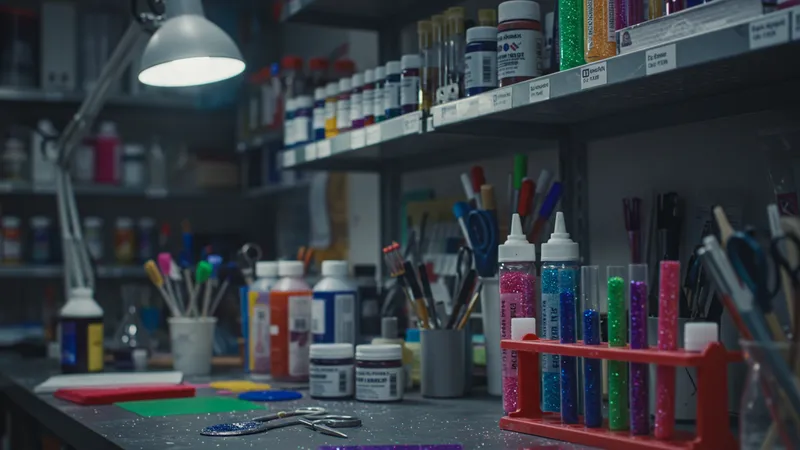
R&D investments are at an all-time high among leading craft supply companies, fostering innovation that meets the evolving needs of creators. Emerging trends and consumer demands drive the development of new materials with both environmental and functional benefits. Experimentation in laboratories across the globe is yielding materials that were once confined to imagination. But the implications reach beyond just functional products
Collaborations between artists and companies have become a cornerstone of innovation. These partnerships bring fresh perspectives and insights into product development, resulting in offerings that resonate with contemporary creators. By listening to the needs and aspirations of their consumers, companies can stay at the forefront of the market and ensure product relevance. Yet there's a new frontier being explored…
Innovation is not only about new materials but also enhanced experiences. AR and VR technologies are being integrated into craft supply retail, allowing potential customers to virtually test and visualize products before purchase. This intersection of technology and creativity is transforming how consumers interact with products, making crafting more exciting and accessible. But what does the future hold for this ever-evolving sector?
Cultural preferences have gradually shifted towards homemade goods, a trend that directly and profoundly impacts the craft supply industry. People are increasingly drawn to the charm and uniqueness of handmade items over mass-produced commodities. This preference is reshaping consumer culture and driving a substantial rise in crafting communities. But what fuels this cultural transformation?
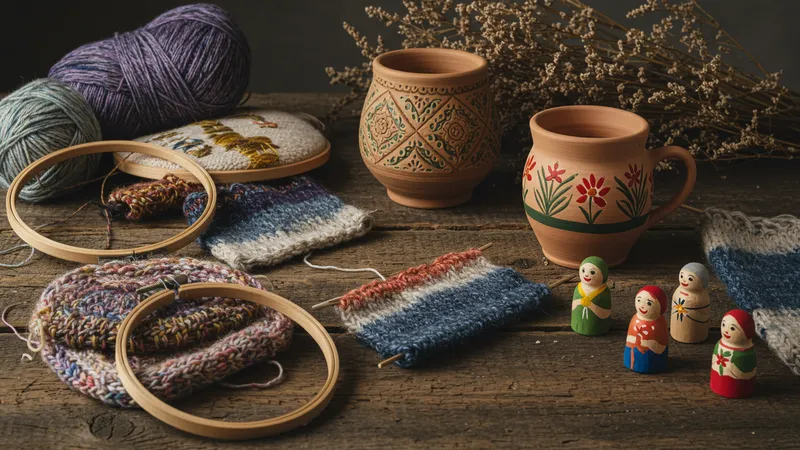
The move towards homemade goods is partly driven by a desire for authenticity in a world characterized by mass production. Buyers are keenly interested in products with a story and a personal touch, ensuring their purchases stand out. This need for individuality is a core driver, encouraging more people to create rather than purchase uniform goods. However, there’s more than just personal preferences at play…
Economic considerations also play a role. Many see crafting as a way to economize while still possessing bespoke items that suit their tastes. This economic motivation is closely linked to environmental mindfulness, as people endeavor to reduce their carbon footprint by reusing and recycling materials in their homemade creations. But what broader impacts does this trend entail?
In embracing homemade over store-bought items, traditional retail dynamics are being disrupted. Craft fairs, online marketplaces, and maker events are flourishing, offering platforms for artisans to showcase and sell their handcrafted goods. This disruption speaks to a wider societal shift towards appreciating the art of creation and valuing the skills involved. But there’s a twist that could redefine consumer markets…
The future of craft supplies is intricately linked with ongoing technological integration. As technology continues to evolve, so does its application in crafting, opening up new realms of possibility. 3D printers, laser cutters, and digital design tools are becoming indispensable in modern crafting, offering unprecedented precision and creativity. But how will this integration continue to transform the industry?
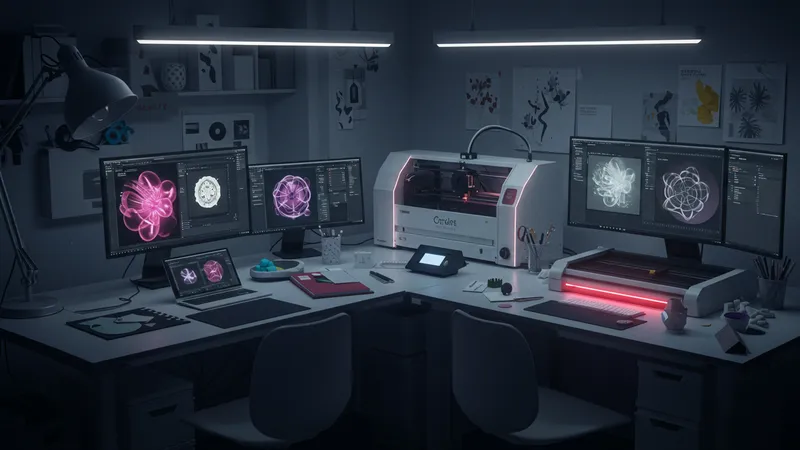
As technological costs decrease, smaller businesses and individual crafters are gaining access to tools previously exclusive to large firms. This democratization of technology enables vast creative freedom, allowing individuals to experiment with materials and methods that revolutionize traditional crafting. The impact of this access is profound and growing. Yet there’s an unexpected twist...
These advanced tools are also promoting sustainability, with precise technologies minimizing waste and optimizing resources. The ability to design and perfect products digitally before production reduces material consumption and promotes more eco-friendly practices. This convergence of technology and ecology is crafting a new narrative for environmentally conscious creation. But what else lurks on the horizon?
The future of crafting is not just technological; it’s collaborative. Online platforms that facilitate sharing, collaboration, and innovation are bound to grow, fostering community-driven solutions and ideas. This collaborative aspect is likely to redefine the crafting industry, making it more inclusive and interconnected than ever before—bridging solo creators and global audiences. What happens next could reshape the way the world crafts…
The rising demand for craft supplies is creating unexpected investment opportunities within this booming industry. Once seen as a niche market, crafting has evolved into a lucrative sector attracting keen interest from investors seeking new avenues for growth. This economic potential aligns with shifting consumer behaviors and technological advancements revolutionizing how crafting is approached. What is underpinning this investment potential?
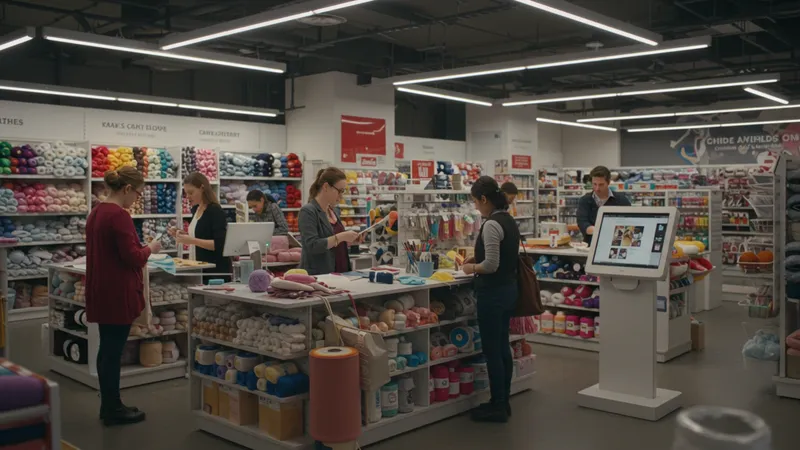
A key driver is the continuous expansion of the consumer base. As more individuals take up crafting, whether for personal enjoyment or financial gain, the market potential increases. This growth has been robust, with projections pointing towards continual expansion fueled by societal and technological trends. However, there’s a more nuanced perspective to consider…
Technology plays a crucial role in crafting's investment appeal, offering scalability and innovation in products and services. Companies that integrate AI and machine learning into product development or streamline supply chains using advanced logistics are attracting significant interest. The potential return on these tech-driven investments presents a new frontier for venture capital within the crafting space. But there's another side to this evolving market…
The social and environmental consciousness driving new craft supply trends also presents an opportunity for impact investing. As consumers prioritize sustainability and ethical production, businesses that lead in these areas are poised for significant growth. For investors, this aligns financial returns with social good, offering a unique value proposition in a rapidly changing marketplace. What does this mean for future investment patterns and opportunities?
Crafting is increasingly becoming recognized as a powerful cultural movement rather than just an individual pastime. This evolution reflects broader societal shifts towards personalization, sustainability, and community empowerment. As a cultural phenomenon, crafting transcends demographics, appealing to diverse groups driven by a desire to create and connect. But what makes crafting a cultural force?
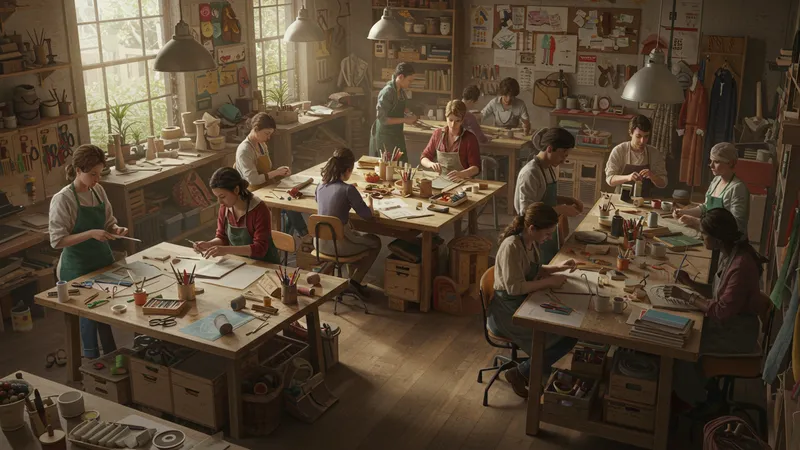
This movement is rooted in a collective yearning for authenticity and a counterbalance to digital saturation. While technology facilitates connection, crafting provides the tactile engagement and personal expression missing from virtual interactions. This balance between the digital and tangible worlds is central to crafting’s cultural appeal. But this is only the surface of a deeper trend…
Community plays a critical role in crafting’s cultural influence. Craft fairs, maker spaces, and online communities foster collaboration and shared learning, creating networks of creators who support and inspire one another. These communities become incubators for creativity and innovation, showcasing the potential of collective crafting efforts. However, the cultural resonance of crafting goes even further...
Crafting also embodies cultural preservation and innovation. While it draws on traditional skills and techniques, it continuously adapts to modern influences and challenges. In doing so, crafting serves as both a custodian of cultural heritage and a platform for innovation, weaving together narratives from past and present. This duality is crafting a vibrant cultural landscape that’s continually evolving and expanding. What the future holds could redefine cultural engagement across the globe…
Education is playing an increasingly pivotal role in shaping the future of crafting. Programs that integrate crafting into curricula help nurture creativity, improve problem-solving skills, and provide a hands-on understanding of various concepts. This educational inclusion is fostering a new generation of creatives poised to drive future crafting innovations. But how exactly is education influencing this evolution?
The incorporation of crafts into education is being recognized for its ability to enhance academic outcomes. Educators see crafts as a way to contextualize learning, making abstract concepts more tangible and engaging. Skills such as precision, patience, and critical thinking developed through crafting are invaluable in various academic disciplines and life stages. There's a transformative element involved here...
Moreover, craft-based education fosters inclusivity and accessibility, adapting projects to a range of abilities and learning styles. This adaptability ensures that all learners, regardless of background or skill level, can participate and benefit from hands-on activities. The inclusive nature of crafting as an educational tool is paving the way for more equitable learning experiences. Yet, there's more beyond just educational applications…
As educational systems evolve, the symbiotic relationship between technology and crafts is becoming increasingly prominent. Robotics, coding, and digital design are being incorporated into craft projects, broadening their reach and impact. This merger prepares students for future careers that demand creativity and technological fluency, reinforcing crafting’s relevance in a changing world. But the full potential of crafting in education is still unfolding…
The crafting industry is poised at a fascinating intersection of tradition, innovation, and cultural evolution. The forces shaping it — sustainability, technology, and education — are driving change at an unprecedented rate, presenting both challenges and opportunities. As this dynamic landscape unfolds, crafting is set to remain a mainstay of cultural and personal expression. Share this article and join the crafting conversation to explore these exciting possibilities further!